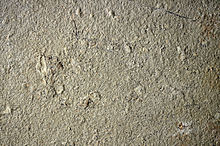Horodyskia
|
Horodyskia Temporal range: 1500 - 900 Ma |
|
|---|---|
 |
|
| Horodyskia moniliformis, "string-of-beads fossil" from the 1.4 Ga Appekunny Argillite of Glacier National Park, Montana) | |
| Scientific classification | |
| Kingdom: | Fungi |
| Phylum: | Glomeromycota |
| Order: | Archaeosporales |
| Family: | Geosiphonaceae |
| Genus: | Horodyskia |
| Species | |
|
|
Horodyskia is a fossilised organism found in rocks dated from 1,500 million years ago to 900 million years ago. Its shape has been described as a "string of beads" connected by a very fine thread. It may also have had a series of holdfasts along the bottom of the thread.
Comparisons of different fossils in the same locations suggest that it re-arranged itself into fewer but larger main masses as the sediment grew deeper round its base.
Horodyskia has been considered an early metazoan, and a colonial foraminiferan. These alternatives are now considered less likely than a Geosiphon-like fungus (Glomeromycota, Archaeosporales).
...
Wikipedia
